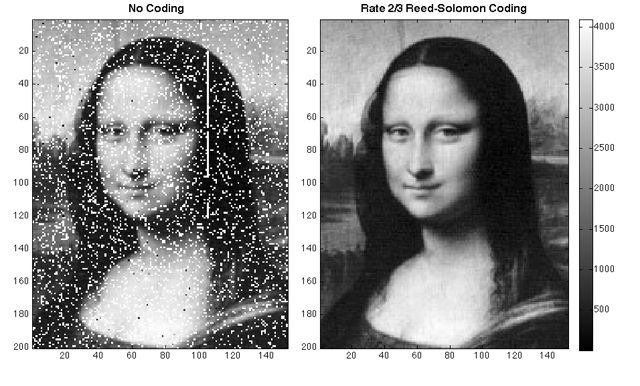NASA has successfully transmitted a digital copy of Leonardo da Vinci’s Mona Lisa to the Lunar Reconnaissance Orbiter (LRO) via laser beam as part of an experiment designed to evaluate the possibility of replacing current radio systems with laser transmissions. Launched in June 2009, the robotic orbiter is currently in the process of creating a detailed, three-dimensional map of the Moon’s surface for use in possible future manned exploration missions to the Moon.
A digital version of the famous painting was encoded into a 152 x 200 grayscale pixel array by engineers and transmitted pixel-by-pixel via laser pulse from the Goddard Space Flight Center’s Next Generation Satellite Laser Ranging (NGSLR) to the spacecraft’s Lunar Orbiter Laser Altimeter (LOLA). The image traveled over 240,000 miles at a rate of 300bps.

Though interference from turbulence in the Earth’s atmosphere disrupted the transmission, LOLA was able to reconstruct the full image using Reed-Solomon error-correction, a method primarily used to correct errors in DVDs.
NASA hopes to transmit data via laser at a rate of 600 million bits per second in an upcoming Moon mission.






